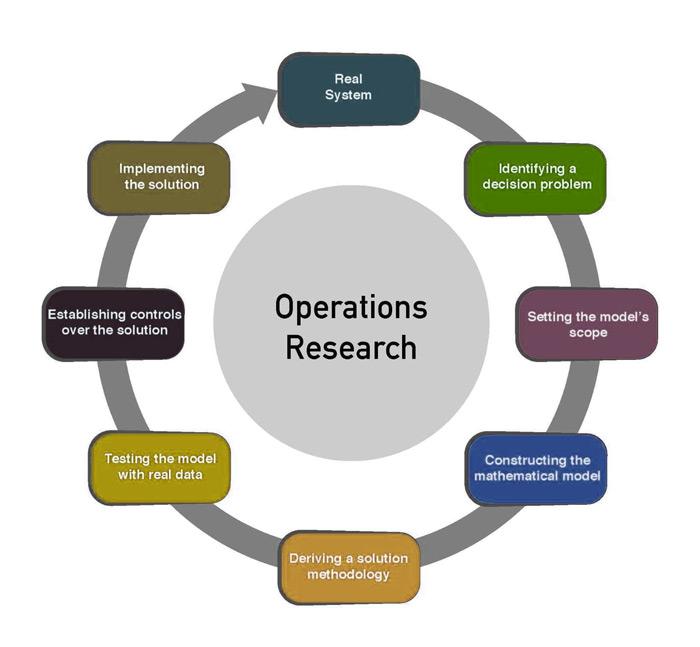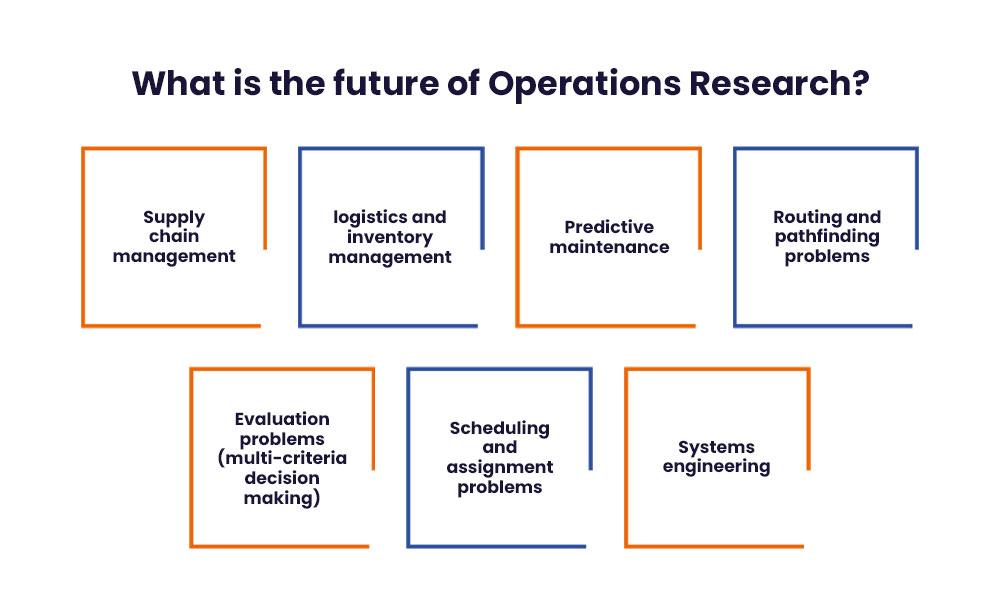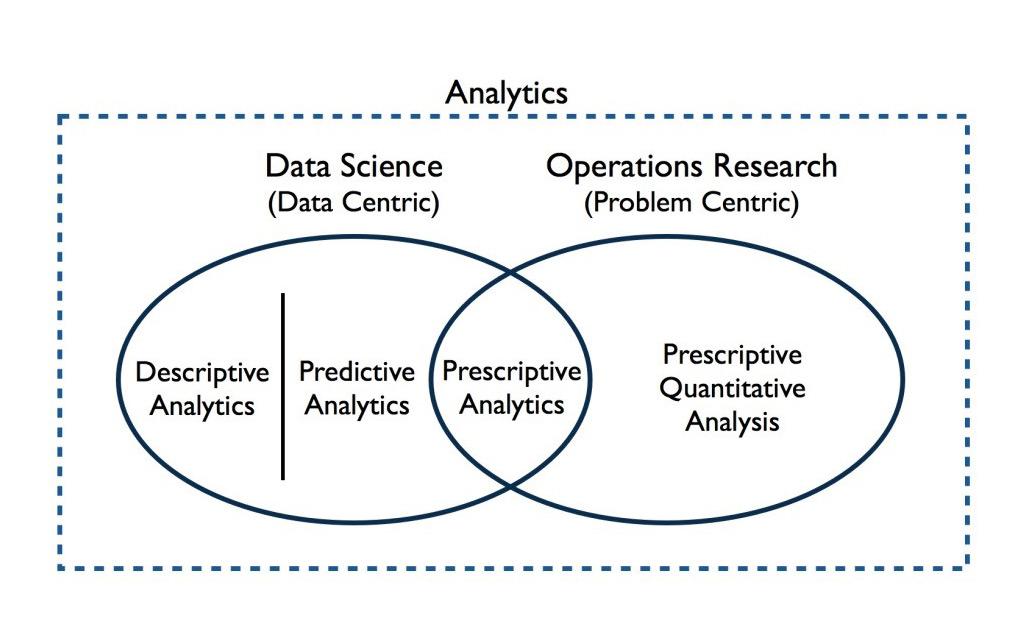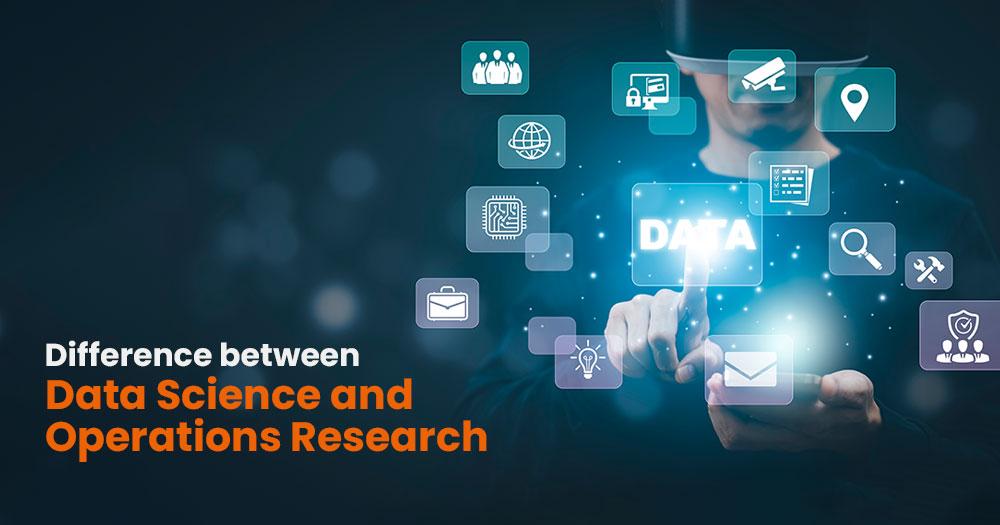Given the enormous amounts of data being produced today, data science is a crucial component of many industries and is one of the most hotly contested topics in IT. Since data science has become increasingly popular, businesses have begun to use it to expand their operations on data and improve customer satisfaction. Operations research, typically carried out by teams of engineers and scientists drawn from various disciplines, aims to give those who manage organized systems a quantitative and objective basis for the decision. Operations research, which emphasizes the performance of organized systems as a whole rather than on their components, is not a science in and of itself but rather the application of Science to the resolution of managerial and administrative problems. Operations research in data science, which typically focuses on systems where human behavior is essential, differs from systems engineering, which, while employing a similar approach, typically focuses on methods where human behavior is unimportant.
What is Data Science?
The field of study known as data science works with enormous amounts of data using cutting-edge tools and methods to uncover hidden patterns, glean valuable information, and make business decisions. Data science creates predictive models using sophisticated machine learning algorithms. The information used for operation research and data analytics can be presented in various formats and come from multiple sources.
You may also read about What is Data Science? – Use of Data Science in Real Life
What is Operation Research?
Operational Research is the application of similar concepts to more significant, complex choices involving the operations of data, including organizations and networks of machines. Mathematical techniques are required to solve a numerical version of the problem when making these decisions using Operation Research. The first thing that needs to be understood in Operation Research is the objective or goal because it explains what we want from a solution and enables us to compare various ones. The goal is typically measurable in terms of cost or profit. It can be helpful to find numerical representations for other system components in complex problems.

Operation Research entails carrying out this same action by examining the system’s components and organizational structure. OR entails carrying out this same action by reviewing the system’s architecture and individual parts to gather as much numerical data as possible. Numerous aspects of a system, such as the resources at its disposal, its energy effectiveness, the size of its workforce, and so forth, can be quantified. Doing this makes these properties simple to compare, and we can see how they affect our goal.
Operations Research and Data Science
Before discussing the function and relationship between data science and operation research, let’s try to understand the meaning of another crucial term, analytics. According to INFORMS, operation research and data analytics analyze issues involving complex systems through scientific and mathematical methods. Three different categories of analytics exist:
- Using historical data, descriptive analytics provides an understanding of past events;
- The future can be foreseen with the help of predictive analytics; and
- Prescriptive Analytics supports decision-making by offering helpful guidance.
Glenn Wegryn divides operation research and data analytics into two groups in an INFORMS podcast based on the organizational backgrounds of the listeners: data-centric analytics, which uses data to uncover intriguing insights and information to predict or anticipate what might happen; and decision-centric or problem-centric analytics, which starts by understanding the problem before identifying the precise methodologies and data required to solve the particular issue. While operations research in data science is used for problem-centric analytics, data science is used for this data-centric analysis. The figure mentioned above gives a clear idea of this. The figure makes it abundantly clear that both domains share an area of interest. Therefore, OR is crucial in the field of data science.
Operations Research and Machine Learning
The majority of OR tools and techniques are employed in the field of machine learning, which is part of data science. The machine learning life cycle includes fundamental elements like linear programming and optimization techniques. Several instances of OR include:
- Enabling intelligent human resource management by anticipating human resource needs and planning resource people’s daily schedules (linear programming model)
- Increasing TV programme viewership through effective promotion scheduling (linear programming model)
- Enabling supply chain transformation by giving recommendations for optimal product utilization based on AI/machine learning
- Forecasting with Artificial Intelligence for eCommerce and retail applications to increase customer flow
- Models for automated inventory management that are data-driven and allow for quality control, inspection, and warehouse management
What is the future of Operations Research?
The versatility of Operation Research knowledge, abilities, and resources across different industries is a draw. Currently, OR is used in most businesses and industries, whether in a more or less specialized form. Examples include agriculture, energy trading, production, and sales, the space industry, asset pricing, military operations on data, and demand forecasting. Probably the most notable use cases are:

- Supply chain management
- logistics and inventory management
- Predictive maintenance
- Routing and pathfinding problems
- Evaluation problems (multi-criteria decision-making)
- Scheduling and assignment problems
- Systems engineering
The four abilities listed below serve as the common denominator in terms of tools, enabling you to:
- Use mathematical optimization techniques like stochastic, dynamic, and linear programming.
- Devise algorithms for solutions. Solutions are frequently needed in almost real-time. In other words, finding the best solution is optional. One “just” wants a workable answer. Solution algorithms like expert-inspired heuristics or bio-inspired genetics algorithms, optimization of ant colonies, and even neural networks or judgment-inspired gradient boosting methods are appropriate for significant problems with high complexity (for example, NP-Hard problems). It depends on the problem’s structure and whether a model-based or data-based solution approach is used.
- Investigate the flexibility and robustness of the derived solution approaches using in-depth simulations. Either through sensitivity testing, Monte Carlo simulation, etc.
- Perform a thorough analysis of the issues, such as identifying critical paths in a network. As an illustration of the significance of a detailed analysis, it has been found in network analysis, specifically in traffic networks, that removing roads can increase traffic flow. It is known as the Braess paradox and has been discovered to deceive various systems, including biology, electrical grids, and team sports tactics. Therefore, it is crucial to analyze one’s solutions properly.
Data Science vs. Operations Research
Operations research in data science focuses on the decision-making and optimization of numerous business projects, such as pricing, inventory management, supply chain, etc. Because OR algorithms are also used on real-world data, operations research and data science are closely related. Data science is the spade to dig into the data and extract value if operations research on data is the metal detector that points to the appropriate business area. Numerous operation research data analysts are changing their career paths to data science because there are more opportunities than in OR, and data science can almost entirely solve all OR problems.
Why does Data Science need Operations Research algorithms?

If we’re going to create an automated system, there will be a lot of different decision-making factors. The operations research in data science must therefore be a vital system component. The scientific field of operations on data investigates the efficient management and organization of human-machine systems. It has a close connection to management science. The methodology originates from the problem-raising, analysis, and modeling steps that lead to programme implementation. The development of the entire management discipline is crucial. These are two facts about why Data Science needs Operations Research algorithms:
- Making decisions, creating a mathematical model (with an objective function, decision variables, and constraints), and then applying algorithms to develop that mathematical model further is at the heart of operations research in data science.
- The fundamental goal of data science is to make predictions about unknown information using the data that has been gathered.
Conclusion
The discussion above makes it abundantly clear that some areas where Data Science and Operations Research share goals while also drawing distinct lines between them. Additionally, we note that several OR methods and algorithms play significant roles in various data science domains. I believe operations research, data science, and analytics will play a crucial role in constructing our future.


